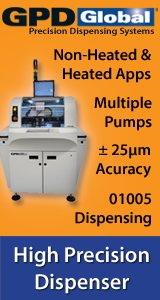Printed Circuit Board Assembly & PCB Design Forum
SMT electronics assembly manufacturing forum.
- SMTnet
- »
- Electronics Forum
- »
- Small batch Manufacturing
Small batch Manufacturing
Views: 5027
![]() Hi all
Just found this forum and spent the last three hou...
- Dec 17, 2007
by
Andy1975
Hi all
Just found this forum and spent the last three hou...
- Dec 17, 2007
by
Andy1975
![]()
![]()
![]() Hello Andy,
Please try to visit ...
- Dec 17, 2007
by
janz
Hello Andy,
Please try to visit ...
- Dec 17, 2007
by
janz
![]()
![]()
![]() You can spend a couple grand on a manual screen printer, or ...
- Dec 17, 2007
by
FD
You can spend a couple grand on a manual screen printer, or ...
- Dec 17, 2007
by
FD
![]()
![]()
![]() Stencils on average should be a low cost to you, compared to...
- Dec 17, 2007
by
Real Chunks
Stencils on average should be a low cost to you, compared to...
- Dec 17, 2007
by
Real Chunks
![]()
![]()
![]() Whoa dude - slow down- maybe great beer money but if you don...
- Dec 17, 2007
by
mparker
Whoa dude - slow down- maybe great beer money but if you don...
- Dec 17, 2007
by
mparker
![]()
![]()
![]() Another tactic. Become friends with all the local solder pa...
- Dec 17, 2007
by
Dirk Nuendyke
Another tactic. Become friends with all the local solder pa...
- Dec 17, 2007
by
Dirk Nuendyke
![]()
![]()
![]() In addition to what frank said, I have also just placed the ...
- Dec 18, 2007
by
wayne
In addition to what frank said, I have also just placed the ...
- Dec 18, 2007
by
wayne
![]()
![]()
![]() Please consider this process as a solution. It truly was inv...
- Dec 19, 2007
by
Matt Kehoe
Please consider this process as a solution. It truly was inv...
- Dec 19, 2007
by
Matt Kehoe
![]()
![]()
![]() Andy,
Without turning this into a sales pitch, I urge you...
- Dec 19, 2007
by
Matt Kehoe
Andy,
Without turning this into a sales pitch, I urge you...
- Dec 19, 2007
by
Matt Kehoe
![]()
![]()
![]() I run a prototype/small-run shop, so I'll include some recom...
- Dec 20, 2007
by
isd.jww
I run a prototype/small-run shop, so I'll include some recom...
- Dec 20, 2007
by
isd.jww
![]()
![]()
![]() Thanks for the posts everybody.
I thinks this is all or n...
- Dec 21, 2007
by
Andy1975
Thanks for the posts everybody.
I thinks this is all or n...
- Dec 21, 2007
by
Andy1975
![]()
![]()
![]() Andy,
I think you'll find as many answers to your questio...
- Dec 21, 2007
by
robgd3
Andy,
I think you'll find as many answers to your questio...
- Dec 21, 2007
by
robgd3
![]()
![]()
![]() > All or nothing
You do not need to purchase everything a...
- Dec 21, 2007
by
isd.jww
> All or nothing
You do not need to purchase everything a...
- Dec 21, 2007
by
isd.jww
![]()
- SMTnet
- »
- Electronics Forum
- »
- Small batch Manufacturing







